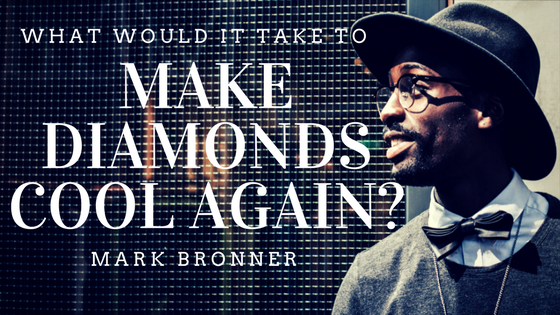In recent times, millennials are being blamed for everything from the economy to election results, and even the fall of the diamond industry. Yes, the fall of the diamond industry. It seems as though the lack of interest in the glitz and glam of diamonds, has weighed poorly on the industry in comparison to past generations. How can the industry adjust itself, to get back the interest and “cool” factor it once possessed?
Many declines in certain industries can place blame a certain factor or variable, some of which are controllable , while others are merely trends here to stay. CNBC reported, the average age of millennials marrying has increased compared to previous generations, causing greater lengths of times when engagement and wedding rings are being purchased. This is something the industry has hardly any control over, but is a prominent variable. While a great deal of the millennial generation have their own unique way of expressing themselves, fine jewelry is not high on their priority list.
Sustainability has become an iconic factor in how millennials make lifestyle decisions. Jewelry is not immune to this as a trend in sustainable rings has recently surfaced. An example includes the increasingly popular silicone Qalo rings. Incorporating a diamond into the silicone design could pose as a tricky task, but taking note of the sustainable design would definitely benefit the industry’s “cool” factor to millennials. If jewelers can provide millennial consumers with a viable style that proves itself with long-lasting material, their likeness of diamond sales growth is foreseeable.
Priorities
In conjunction to sustainability, ethical lifestyle choices have become a huge part of a millennial’s profile. After the box office success of “Blood Diamonds,” many were uncertain of their humane role in purchasing the stones. To appeal to the generation, industry participants might consider creating a “certificate” of sorts, proving the origins of the diamond. Knowing their purchases are ethically sound, would more likely help than hurt the business.
Millennials’ lack of interest in diamonds not only comes from ethics and sustainability but overall priorities. An article by The Daily Beast stated that although the economy is not completely to blame, the desire for twentysomethings to save or spend their earnings elsewhere has hindered sales. There is little control the industry possesses to sway millennials in purchasing diamonds over an adventurous vacation, but the appeal towards making a more financially savvy decision creates a greater understanding of the generation’s consumer thought process.
Style
Finally, and possibly most obvious, styles are constantly changing. Not only through generations past and present, but every day new trends are seen in fashion, music, and lifestyle. As part of an industry that appeals to multiple generations, those dealing with diamonds should constantly be aware of the ever-changing movements amongst a generation. Erin Mayer presented an article for Bustle highlighting a collaboration between Refinery 29 and Melissa Joy Manning, featuring a unique collection of Hermiker diamond pieces. She describes the pieces as “rough” and of a “bohemian” variety, an appealing design for many millennials. Any adaptation to the classic diamond ring, necklace, or earring, displays a more diverse complexion for the rapidly developing styles across generations.
Though there is no certainty future generations will always see diamonds as “a girl’s best friend”, keeping up with priorities and trends of upcoming generations, a greater appeal for the stones is created.
